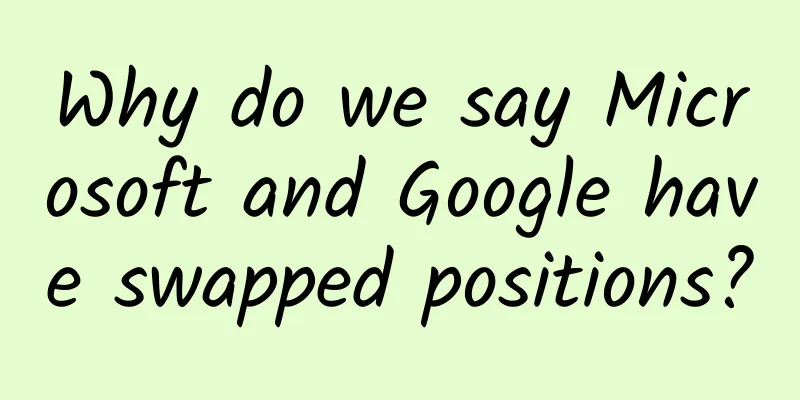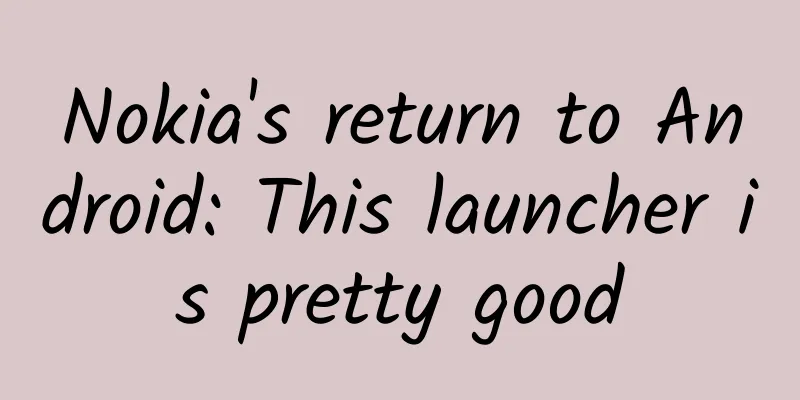Why do we say Microsoft and Google have swapped positions?

|
A year is a long time in tech, but the past 12 months have seen one of the most unexpected and exciting upheavals in recent memory: Microsoft and Google have swapped places. This is, in my opinion, the current situation. In 2015, Satya Nadella's Microsoft has become an aggressive, open web services company. In contrast, Google has clung to increasingly aging revenue pillars, ignored current realities, and focused on a haphazard project that has been over-promising but has not delivered the expected results. How Google Became the Old Microsoft Google's pillars -- advertising and search -- have become its Windows and Office. Both businesses are being eroded by more precise ad targeting within social media and an increasingly segmented world of apps. Facebook, Twitter, Snapchat and Instagram know more about users and their thoughts than a Google search request, and users are increasingly using specific apps (such as weather apps) to meet specific needs rather than using search engines to find results. The resulting chain reaction is that Adsense business is going downhill, and Google's search market share has now dropped to a seven-year low. Just like Microsoft once did with Windows and Office, Google can still conceivably hold on to these two businesses as its main revenue pillars. But future trends have shown that these businesses will only decline further, and it is not easy to find a way out. Moreover, Google appears to be making the same mistake that the old Microsoft made: putting mobile on the back burner. Material design Just as Windows' evolution slowed after Microsoft dominated the PC world, Google looks to be resting on its laurels after dominating the mobile world with Android. I'm a big fan of Android 5.0 Lollipop, but in hindsight, was it really a smart move for Google to prioritize its Material Design design language over performance, battery life, and addressing system fragmentation? After all, the first thing most device makers abandon when adopting Android is its native user interface. Likewise, Google's Nexus project continues to be a woeful mess, a waste of talent. Meanwhile, the company's promising "Google Play Editions" project (and its half-baked successor, "Project Silver") appear to have died in the process. Even Google's mobile apps feel unlovable, and the integration of Android and Chrome OS continues to move at a snail's pace. So what is Google focusing on? Clearly, moonshot projects. The company talks excitedly about self-driving cars, hot air balloons that deliver internet service, revolutionary contact lenses, cardboard VR headsets and glasses, modular smartphones, and its painfully slow rollout of gigabit broadband, Google Fibre. How many of these projects have improved Google's current market situation? None. None. I’m all for Google’s ambitions and efforts to change the world (in Google’s case, again), but as these projects ebb and flow, the company is shaking its foundations: *The once-slim Chrome browser still has a problem with high memory usage. * Chrome OS lacks direction (Pixel laptops haven't been upgraded in two years). *Chromcast has not been upgraded for 18 months, and Android TV has come out to disrupt the market. *The release cycle of new Android versions has become longer and the information has become more opaque. *Android Wear was launched too hastily, and its subsequent evolution was too slow. *Google+ is the ghost town of social media. *Google Wallet failed. In fact, while Google is too focused on the next big thing, Apple is "stealing" the company's ideas, just as Steve Jobs once did to Microsoft. Bigger smartphones, mobile payments, biometric security systems, streaming services, and cross-platform syncing are all ideas that Google first came up with, but Apple is the first company to successfully implement them. Next, will the Apple Watch embarrass Android Wear? What's more important is not just that Apple is making fun of Google, but that Microsoft and its success are based on imitating Google's past business practices, which is even worse. How Microsoft Became the New Google So what was the old Google like? In short: a Trojan horse. It infiltrated whatever space it wanted, preached open standards, provided excellent services for free, and subsidized those efforts with revenue from advertising. Chrome, Gmail, Google Docs, Google Maps, YouTube, and Google Search formed a core force that infiltrated Windows, Mac OS X, iOS, and Windows Mobile, drawing users into Google's own ecosystem. Then, when the threat from the enemy camps disappeared (including BlackBerry OS, Windows Phone, and even Chrome on Windows, which sucked battery and froze), Google stopped or reduced support for those services. Microsoft has a long way to go before it can even consider taking such ruthless second-stage steps, but the company's first-stage actions are well underway. With the release of Acompli and Sunrise, Microsoft's best-in-class email and calendar apps for iOS and Android, the once-ridiculous idea that Outlook and Windows Calendar could be disruptive on iOS and Android is no longer so ridiculous. Project Spartan is Microsoft's upcoming new cross-platform web browser, which very wisely aims for speed. The Microsoft Band fitness tracker is also available on all platforms. The Office productivity suite has been opened to all cloud services to compete with Apple's iWork and iCloud and Google's Docs and Drive. Even Microsoft's handwriting input method Analog Keyboard has become the best app on the Android Wear platform. How did Microsoft get these apps and services in front of users? The company cleverly chose Google's most important partner, Samsung, as a distribution channel by settling its patent dispute with Samsung in exchange for pre-installing Microsoft's apps and services on the Galaxy S6, the best-selling Android phone series to date. Meanwhile, Microsoft will offer Windows 10 for free and continue to develop its own Lumia phones and Surface all-in-one devices to provide a higher standard of hardware for those who switch camps. Google's Nexus project, you are jealous! At the same time, Microsoft is showing that it's still thinking big, like what's arguably the most interesting moonshot project in tech right now: Windows Holographic, Microsoft's vision of the future designed to excite consumers and investors while the company remains largely focused on the present. Why does this happen? The shifts at Google and Microsoft are motivated by the same thing: fear. Now, Microsoft has nothing to lose, and Google has a lot to lose. In the past, the two companies were in the opposite position. Microsoft, which had thrived on revenue from Windows and Office, became complacent and believed it could ignore technology trends and even control them through its market dominance. Microsoft missed opportunities in online services and mobile, and was outsold by Google. Now, Google is making so much money from its web services and mobile businesses that it seems to think it can ignore technology trends and even control them through its market dominance. Google is dreaming of science fiction breakthrough technologies, while Apple and now Microsoft are cutting off its financial support in the present. Mobile has unfinished business, web services are not yet universal, Android smartphone makers are struggling to make profits, and the impact of Apple Pay will be damaging. In this way, Google's transformation into the old Microsoft seems like a natural but suicidal evolution, an easy target not only for Apple but also for a revitalized Microsoft that imitates Google's past. The good news for Google is that it still has plenty of time to smarten up. Microsoft still has a long way to go to fight back, and the market positions of services such as Adsense, Android, Google Maps and Gmail will not be easily shaken in the short term. However, this does raise a bigger question: While Microsoft is regaining its vitality, does the complacent Google know that it has a problem? As a winner of Toutiao's Qingyun Plan and Baijiahao's Bai+ Plan, the 2019 Baidu Digital Author of the Year, the Baijiahao's Most Popular Author in the Technology Field, the 2019 Sogou Technology and Culture Author, and the 2021 Baijiahao Quarterly Influential Creator, he has won many awards, including the 2013 Sohu Best Industry Media Person, the 2015 China New Media Entrepreneurship Competition Beijing Third Place, the 2015 Guangmang Experience Award, the 2015 China New Media Entrepreneurship Competition Finals Third Place, and the 2018 Baidu Dynamic Annual Powerful Celebrity. |
>>: Will CCTV Spring Festival Gala's lonely website live broadcast become mainstream?
Recommend
Scientists let 10,000 worms share a pizza. The reason behind this is heartwarming?
Written by: Qi Zai Layout: Bai Ruobing Excuse me,...
Beichen Asia Market: Analysis of Beijing’s Auto Market in January 2022
1. New car transaction situation In January, Beij...
Will you not get tuberculosis if you get the BCG vaccine? Don't be misled by these rumors
"White plague", "Nine out of ten t...
Carbon Neutrality Industry Report
Carbon Neutrality Industry Report Resource Introd...
4 new media writing suggestions that you may need!
The popularity of WeChat has also brought about a...
Is the mobile phone "high-end"? In fact, the most important part is made of sand→→→
In the last issue, we introduced the functions of...
Comparison and revelation: Which is better, air purifier or fresh air system?
The haze in winter is severe. In addition to seeki...
In the next three to five years, China's home appliances industry will have two major opportunities.
In the next 3-5 years, China's home appliance...
Apple releases OS X 10.10.5 update, mainly to fix bugs
Apple today released OS X 10.10.5 for all users. ...
Compiled APP promotion and operation knowledge [Android application market promotion activities]
Overview Currently, the markets that can apply fo...
How can content operation achieve both traffic and sales?
High-quality content has three dimensions: the ab...
This parasite can kill people, but it's a ray of hope for cancer patients
Injecting live parasites into the human body can ...
Following the retro style of the "small cube" and enhanced by black technology, the Amazfit Neo watch reshapes the classic
Smart watches come in a variety of shapes. Round,...
There are 13 ways to play activities in the 2020 event planning plan
In 2020, will you continue with last year’s old r...
What kind of tigers are in movies and TV shows? Tigger deceived me for 20 years
As the Year of the Tiger arrives, many classic im...









